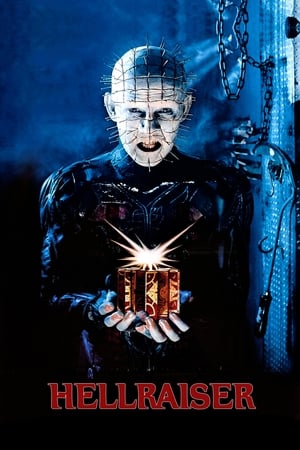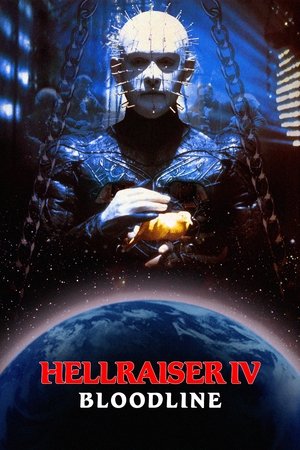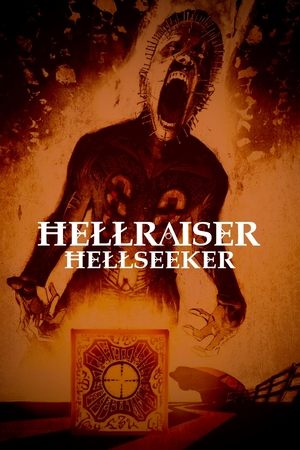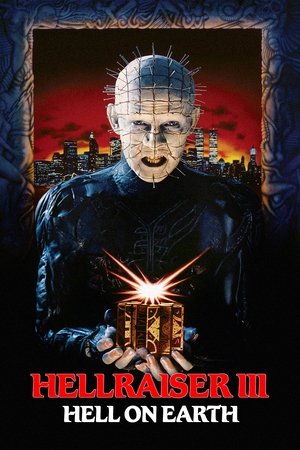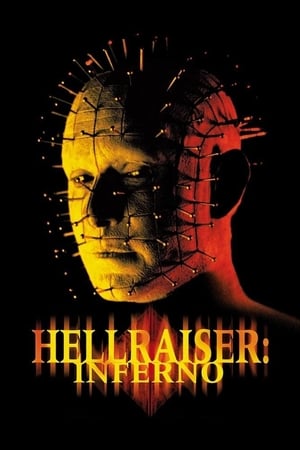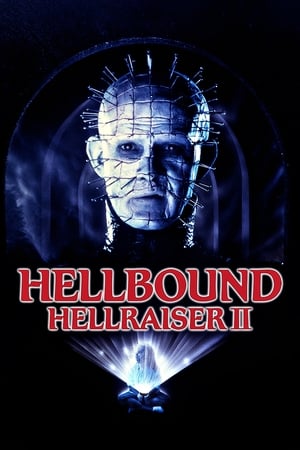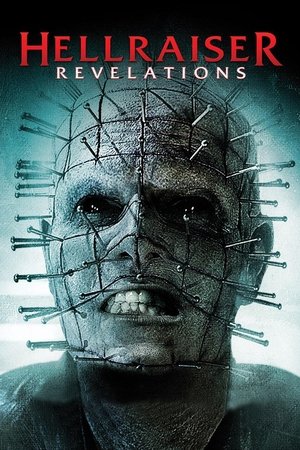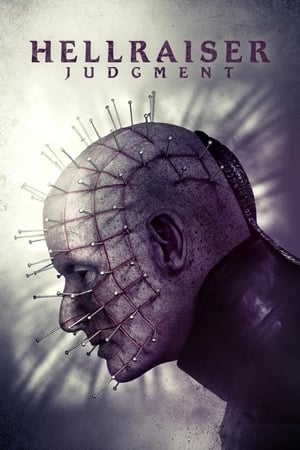Article: Hellraiser Comics
Sycowalt takes you into the world of the Hellraiser comic book series.

Berni Wrightson. Alex Ross. Simon Bisely. Mike Mignola. To anyone who knows comic books, this would constitute a fantasy bullpen...the imagery generated by these artists turn ink and paint into gold on a regular basis. Add the talents of authors like Neil Gaiman, Phil Nutman, Jan Strnad, and even Matrix co-creator Larry Wachowski into that mix. Sounds fiendishly good doesn't it? Now put all of that talent to work under the banner of one of the most distinguishable and lucrative properties in the horror genre. Can you feel the excitement? Now take creator of that property, one of the most regaled and outspoken dark fantasy writers of this past generation, and give him the creative access to keep the vision true. Admit it, you are covered in gooseflesh. Just the mere thought of all the devilment that could be wrought by such gifted hands is mind boggling.
You ask, "What is this dream project, and when is it coming to a bookshelf near me?"
Well, dear reader, I'm here to tell you that it all ready happened.

In 1988, Marvel Comics editors Archie Goodwin and Dan Chichester signed the irrevocable Clive Barker to oversee a quarterly, mature content anthology comic book based on his most popular creation, Hellraiser. (Just in case you have been living under a rock for the past fifteen years, I'll run it down for you: Inspired by the novella "The Hellbound Heart", Hellraiser is the grand epic of Leviathan, Hell's Lord of Order, its minions, the Cenobites, and the war waged against the souls of Man through the weaknesses of the Flesh, using an intricate French puzzle box as a mysterious catalyst.) This title was to be the new flagship book for Marvel's long-neglected Epic line of creator-owned properties, and with the amount of talent stacked in it's pages all impressions were that the sky was the limit.

Book 1 hit store shelves in, appropriately enough, October 1989, sporting a spectacular cover by John Bolton. Bolton also provided interior work on one of the four short stories, as did the legendary Berni Wrightson, Dan Spiegle, and Ted McKeever. Dan Chichester (who is cited by Barker as the "driving force behind the Hellraiser comic") provided a foreward, and Barker himself proffered forth an introduction, a tradition he would continue to do until Book 4. Additionally, artists such as Mark Chiarello and Mike Mignola provided striking Hellraiser-themed pin-ups in-between the stories.
The title was released in Marvel's Prestige Format, which used a better printing process and glossy paper stock to accommodate the book's hand painted artwork. This proved to be a double-edged sword, as the book looked great but hit the shelves with a hefty $4.95 cover price (nearly four times the common $1.25 regular comic price tag). Although the book sold well, the price proved to be a stumbling point for the then-culture of comic book speculators, who were looking for lower priced books that would garner big returns in several months.
The stories in the first six issues presented Hellraiser content that was scattered across both the Globe and Time, in genres ranging from Westerns to Victorian melodrama. Some of the creators of interest in this varied selection of the title include; Kevin O'Neil, author Phillip Nutman, Stan Drake (of Blondie fame), film-scribe Peter Atkins, the husband and wife team Dave Dorman and Lurene Haines, and the unlikely (for comics anyway) Hollywood team of Bill Mumy, Miguel Ferrer, and Bill (Ren and Stimpy) Wray. (For a complete listing of the comics stories and their credits, might I direct you to the Bibliography section of that author's web site: www.clivebarker.com .) Also of note in this period of the book's run is Jan Strnad's ongoing story involving a character named Face. The story chronicled the trevails of an actor going through the process of becoming one of Leviathan's Chosen Ones; an element that foreshadowed the next editorial era of the book.

Pinhead and his gruesome leather clad disciples continued their campaign of terror against the Flesh until Book Seven, when Leviathan decided to kick it up a notch and proceeded in a full scale assault on Mankind. Assembling a collection of it's finest Cenobites to spearhead the final charge, Leviathan's force engaged in a diabolically subversive plot to open the portal to Hell. So was born the title's first multi-issue story arc, "The Devil's Brigade".
Led by Pinhead, the "Brigade's" members included the aforementioned Face, as well as several other archetypal Cenobites (a soldier, a priest, etc.), all acting to bring about Hell on Earth. The "Devil's Brigade" story arc was told in eighteen parts and spanned ten issues, ending in Book 16. The "Devil's Brigade" stories were intermixed with the book's regular short stories, and it included the work of Dwayne McDuffie, John VanFleet, Larry Wachowski, Jackson Guice, Sam Kieth, and Denys Cowan. Other contributors to "non-Brigade" stories from this period included the likes of Mike Mignola, John Bolton, Grey Morrow, George Pratt, and Mike Zeck.

The "Devil's Brigade" storyline proved to be too lengthy and involved for most readers. The disinterest was additionally compounded by a price variation (from $4.95 to $5.95, to $4.50, and then back to $4.95 US) and fluctuation in the publishing schedule (from quarterly to a late bimonthly, and then back to quarterly). By the end of the story arc, readership was down. In an attempt to save the title, Marvel decided to go back to project's source. Subsequently, Marvel signed a development deal with Barker for "The Barkerverse", a set of six comic book titles created exclusively by the author. The first title in the "Barkerverse" (later renamed "Razorline") imprint would be "The Harrowers", which concerned a group of everyday people chosen by a mysterious deity named Morte Mamme to rescue lost souls and combat the forces of Hell. It was decided that Hellraiser would be the perfect place to not only launch "The Harrowers", but the added headline "Clive Barker Returns To Hellraiser" would be just the pill to cure the flagging title.
At the end of Book 16 we are introduced to the character Morte Mamme, the Death Mother, who is the harbinger of the title's final concentrated story arc, "The Harrowing". For this two issue story Barker himself got his hands dirty, providing the plot, as well as the introduction for Book 17. Marvel teamed the writers of "The Harrowing" with a young painter named Alex Ross, who did all the interiors for the story. In keeping with its anthology nature, an additional short was included in each Book; featuring work by John Rozum, Bo Hampton, Erik Saltzgaber, and Mike Hoffman, respectively.

The Razorline imprint failed to last a year in the mass market, and the injection of Barker's talent did little to improve Hellraiser's sales.
The final two Books of the Hellraiser series went quietly from the stands, even though these issues featured the work of such powerhouses as Ray Lago, Ricardo Villagran, Dave McKean, and Neil Gaiman, who had returned to the title carrying all the glory he had earned from his work on DC Comics' Sandman. Sadly, Book 20, the series' last regular Book, hit the stands like an abandoned child, without any commentary or the ever-present (until then) painted pin-ups.
Besides the regular series, several other Hellraiser comics works appear on the printed page. These include two series of supplemental books, two collections of selected stories from the series, a poster book, appearances in other comics publications, and crossover series.

In 1992, Marvel released two of the three supplements from a seasonal-themed line. For hot fun in the summertime, the Hellraiser gang offered a "Summer Special" that included five stories, provided in part by the ever-present Dan Chichester, Mark Evans, and Italian sensation Jorge Zaffino. The "Hellraiser Dark Holiday Special" was a Yule-themed Book featuring work by Mike Okamoto, Steven J. Buccellato, and Tim Conrad. And 1994's "Hellraiser Spring Slaughter" special gave us three shorts about three souls seeking to enter Hell and unravel Leviathan's doing, all brought to us by series regular Larry Wachowski and Mark (X-Force, Tooth and Claw) Pacella.

Hellraiser's other companion series was their "Books of the Damned". This supplemental series collected information and work about the more neglected aspect of the Hellraiser comics mythos (although the most aesthetic and visually recognizable piece of the property), Lemarchand's Box. (Just to keep my rock-dwelling friends up to speed, the Lemarchand Box, also called the Lament Configuration, is the "intricate French puzzle box" I mentioned earlier. It must be solved in order to gain an audience with the Cenobites.) The first, second and fourth of the four book series are mainly clippings from the regular series, pin-up art and supplemental notes on the famed puzzle box. Book Three, on the other hand, is a complete biography of the box's creator, and really shines in the entire spectrum of the Hellraiser comics.
Two collections of outstanding short stories were published as well. The first was published in the early 1990's by Marvel for mass market release in book stores. Subsequently, the print run was so low that the book is virtually impossible to find. The second collection was edited by Barker himself and published by Checker Books in June 2002.
The Hellraiser Poster Book, released in 1991, was a magazine-sized publication that contained sixteen large, full-color reproductions of some of the most striking and surreal images from the comics. It included work by Simon Bisley, John Bolton, Mark Chiarello, and Kevin O'Neil.

Hellraiser comics do also appear in one other publication. Marvel's two-issue Epic, An Anthology (1991) series contains a Hellraiser story in each issue, featuring work by Dan Chichester, William Simpson, and Martin Emond.
In 1991, the ever-constant Chichester, with the help of artist Paul Johnson, took Pinhead and the Priests of Order and Pain into Midian, the fictional setting of Clive Barker's Nightbreed. The chronicles of this bloody campaign can be found in the two-issue mini-series Hellraiser/Nightbreed: Jihad.
What makes this series of books so special to collectors and fans alike is that Hellraiser comics are about as rare as platinum. A recent search on eBay for Hellraiser Comics yielded one result, an incomplete run of the series and two supplements for about $250.00. If you're lucky enough to find one of these great comics for a decent price, snag one up and let it "tear your soul apart". Just remember, "No tears, please....it's a waste of good suffering".
